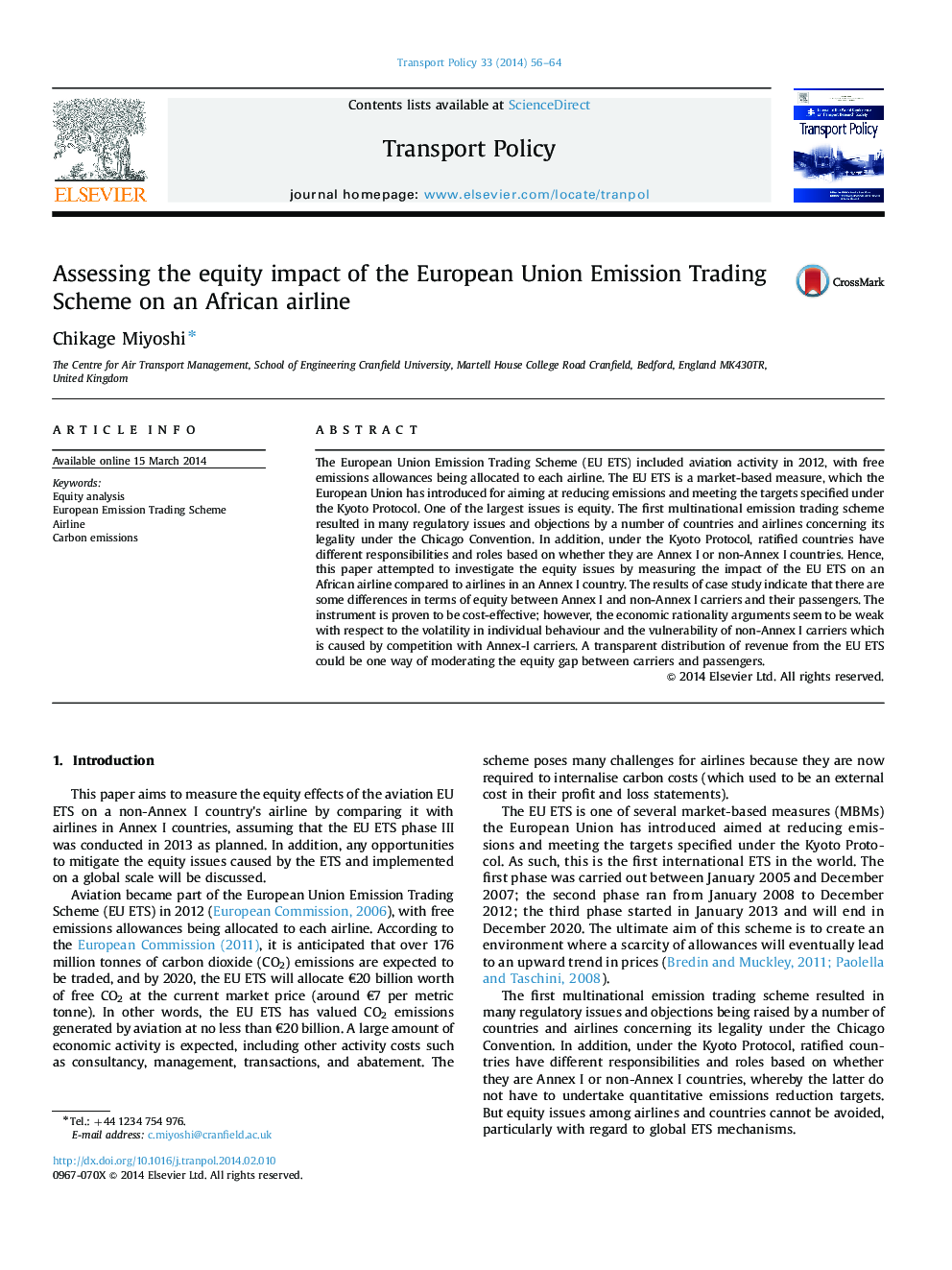| کد مقاله | کد نشریه | سال انتشار | مقاله انگلیسی | نسخه تمام متن |
|---|---|---|---|---|
| 1064836 | 1485844 | 2014 | 9 صفحه PDF | دانلود رایگان |
• The EU ETS should be cost effective; however, it is very limited unless the carbon price is very low.
• An important element is the establishment of a market-determined price for EU allowances.
• There are some differences in terms of equity between Annex I and non-Annex I airlines.
• A transparent revenue distribution could be one way of moderating the equity gap.
The European Union Emission Trading Scheme (EU ETS) included aviation activity in 2012, with free emissions allowances being allocated to each airline. The EU ETS is a market-based measure, which the European Union has introduced for aiming at reducing emissions and meeting the targets specified under the Kyoto Protocol. One of the largest issues is equity. The first multinational emission trading scheme resulted in many regulatory issues and objections by a number of countries and airlines concerning its legality under the Chicago Convention. In addition, under the Kyoto Protocol, ratified countries have different responsibilities and roles based on whether they are Annex I or non-Annex I countries. Hence, this paper attempted to investigate the equity issues by measuring the impact of the EU ETS on an African airline compared to airlines in an Annex I country. The results of case study indicate that there are some differences in terms of equity between Annex I and non-Annex I carriers and their passengers. The instrument is proven to be cost-effective; however, the economic rationality arguments seem to be weak with respect to the volatility in individual behaviour and the vulnerability of non-Annex I carriers which is caused by competition with Annex-I carriers. A transparent distribution of revenue from the EU ETS could be one way of moderating the equity gap between carriers and passengers.
Journal: Transport Policy - Volume 33, May 2014, Pages 56–64
